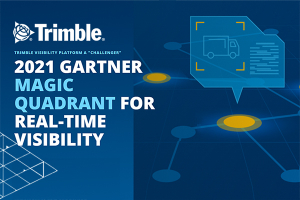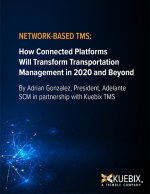Putting Community in TMS: Enabling the Network Effect in Transportation Management
In this eBook, Adrian Gonzalez, President, Adelante SCM in partnership with Kuebix TMS, describes how transportation management systems are transitioning from being “inside the four walls” applications to becoming operating systems that power transportation communities and enable network effects.
Introduction
Transportation management is inherently a network-based business process.
It involves an ecosystem of different parties - a community, if you will, of shippers, carriers, consignees, brokers, and others that need to communicate and collaborate with each other in order to transport products and utilize assets and labor as efficiently as possible.
This transportation community is analogous to the connections and relationships enabled by social networks like Facebook and LinkedIn.
A big difference, however, is that unlike Facebook and LinkedIn, which are powered by network-native software, the transportation community has historically been powered by enterprise-centric software - that is, transportation management systems (TMS) that were designed for, and used primarily by, the transportation function within the four walls of a company.
This fragmented, “inside the four walls” approach makes it challenging to quickly and efficiently match transportation demand with available capacity, as companies of all sizes experienced in 2018.
This growing need in the market for better matching of supply and demand, coupled with the rise of cloud computing, software-as-a-service (SaaS), application programming interfaces (APIs), and other emerging technologies, is driving the next evolution of transportation management systems.
Simply put, transportation management systems are transitioning from being “inside the four walls” applications to becoming operating systems that power transportation communities and enable network effects.
Download this eBook and find out how transportation management systems are transitioning from being “inside the four walls” applications to becoming operating systems that power transportation communities and enable network effects.
What’s Related




Favorites





